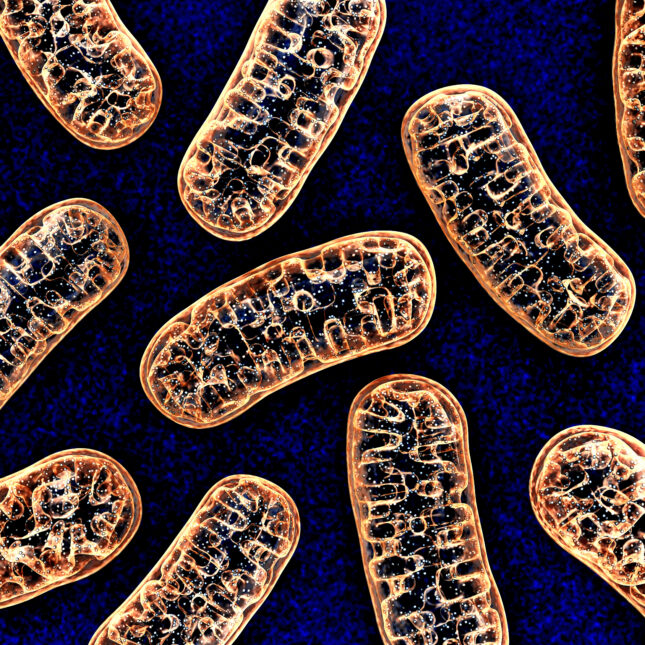
In yet another example of Covid’s seemingly limitless reach into our bodies, new research maps out how the SARS-CoV-2 virus disrupts mitochondria, the power plants in all our cells. The extent of the damage, spanning the lungs, heart, liver, kidneys, and brain, could potentially be one explanation for the lengthy list of persistent symptoms of long Covid, from fatigue to brain fog.
Covid is often considered an inflammatory illness, and theories about what might cause long Covid center on the virus lingering in reservoirs within the body, collateral damage from an overactive immune response to acute infection, and auto-antibodies that turn on the body with misdirected protective force. The study published Wednesday in Science Translational Medicine builds on work showing SARS-CoV-2 can change the structure of mitochondria and hamper energy generation. It goes further to define the genetic mechanism that damages mitochondria in organs, leading to more severe disease and perhaps long Covid.
“What I think this paper does is cement the case for mitochondria as being one of the root causes of long Covid,” Eric Topol, director of the Scripps Research Translational Institute, told STAT. He was not involved in the study. “What we don’t know is whether or not this accounts for X percent, in which people who have mitochondrial dysfunction and key root cause. But I think this study really advances the notion that at least in some people, the mitochondrial effects of infection are playing a role.”
The study is the fruit of a large consortium of researchers led by Douglas Wallace, director of the Center for Mitochondrial and Epigenomic Medicine at the Children’s Hospital of Philadelphia. Since 1971, Wallace has been striving to understand the biology and the genetics of human mitochondria and the role they play in human health and disease. That includes understanding that the mitochondrion had its own DNA. Mutations in mitochondrial DNA — what Wallace calls “the wiring diagram of a power plant” — turn out to be important in a wide variety of both rare and common diseases.
To see if Covid-19 was one of them, the research team assembled pre-vaccine patient cases to examine about 700 nasopharyngeal swabs and 40 autopsies with visceral organ analysis to look at how the virus had affected the mitochondria. They found that the virus inhibited mitochondrial genes that produce proteins critical for making energy. And by turning down that production, SARS-CoV-2 forced the cell to use an alternative approach that it then hijacked to make more virus — much as cancer cells do to promote their own growth.
Wallace said he wasn’t surprised to see this activity, but “we were amazed at how sophisticated the virus is in achieving that goal.” He also called the reach of the virus astonishing. The virus disrupted mitochondrial genes in multiple organs in people with late-stage disease, especially in the heart, liver, and kidneys.
Because the human samples didn’t offer enough data to understand all the steps the virus took to seize control over human biology, the scientists turned to animal models to follow different stages of the viral progression not possible to see in the nasopharyngeal and the autopsy samples. In hamsters whose Covid infections were lodged in their lungs, they found how far the virus could go. In the brain’s cerebellum, mitochondrial function was suppressed. And in the striatum, which is important in motor control, the mitochondrial expression actually went up. That meant even though the virus was just peaking in the lungs, it was already having a systemic effect, particularly in the brain.
“As you know, people with long Covid and also people with acute Covid infections have problems with learning and memory. This would imply that the host response very early on into the viral replication is affecting brain function,” Wallace said. “And that may account for something like brain fog, hypothetically.”
Wallace is cautious about the study’s findings, emphasizing the need to test the theories they suggest. Asked what’s next, he said, “we have hypothesized that that is an important factor in long Covid. But we don’t have the funds to pursue that research.”
In response, Topol expressed frustration.
“We have no single validation of a drug or intervention that helps people with long Covid. Not a single one,” he said. “Why don’t we start really getting serious about treatments that enhance mitochondrial function? We know there are some candidates out there. Why don’t we get on it? … We should have funding for this.”
Speaking more generally about the $1 billion RECOVER initiative to study long Covid and its investment in more studies observing symptoms than testing treatments, Topol said, “The trial issue is just horrible that we haven’t made major headway.”
Wallace sees a more widespread need for research, saying the clinical importance of the mitochondria has been largely overlooked by the health care establishment.
“What I would call for is a much greater investment in understanding the importance of mitochondrial energetics in health and disease, not only for treating SARS and perhaps long Covid, but for also really changing our approach to looking at common chronic diseases, which are, of course, the ones that most of us are worried about.”
Correction: An earlier version of this story misstated Douglas Wallace’s affiliation. The story was also unclear on when scientists discovered that the mitochondria had their own DNA. That was in the 1960s.










Exciting news! STAT has moved its comment section to our subscriber-only app, STAT+ Connect. Subscribe to STAT+ today to join the conversation or join us on Twitter, Facebook, LinkedIn, and Threads. Let's stay connected!
To submit a correction request, please visit our Contact Us page.